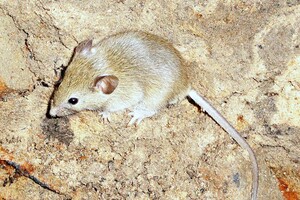Cells were dried by gradually freezing to -80 degrees Celsius.

Scientists from the Japanese University of Yamanashi were able to clone mice from dried and frozen skin cells from their tails. As reported by Science Alert, the skin cells were dried using a process called freeze drying.
It allows, for example, to dry and store berries or food for astronauts. At the same time, it was believed that freeze-drying destroys cells. Now, scientists have proven that they can be used to grow full-fledged, viable and fertile clones. This is important because the storage of embryos in liquid nitrogen is a very expensive process, and the storage conditions are easily disturbed in the event of a natural disaster.
Also read: Scientists have created artificial genomic DNA
Sublimation drying is a gentle, albeit intensive process. Objects are frozen in several stages until the temperature drops to -80 degrees Celsius. And then they are placed in a vacuum chamber under high pressure.
This process turns the water into ice, while the large ice crystals do not penetrate the cell walls, and the pressure turns the water from a solid state into a gas, which is then sucked out of the product . The procedure is repeated several times until the object becomes light and crispy, but at the same time retains most of its structure.
Basically, freeze-drying is used in the food industry, which allows you to preserve nutrients and the taste of products in their original form. In addition, the process is used in pharmaceuticals and sometimes in taxidermy.
After the dried product arrives at its destination, it can be rehydrated, retaining many of its original properties. A similar process has been successfully used for several decades. But turning something similar to living cells is very difficult.
So far, this group of researchers has conducted experiments with the storage of freeze-dried sperm in a desk drawer (without temperature control) for more than a year and on the International Space Station for more than five years. As a result, it was possible to obtain viable offspring, but the best result was obtained with adolescent samples.
Scientists note that freeze-drying may be the best way to store genetic resources for a long time. However, so far the only cells that give offspring after undergoing such a process are mature spermatozoa.
When cloning, researchers need a non-reproductive cell (called a somatic cell) from the entire DNA of an animal. This package of nuclei, filled with DNA, can then be inserted into an egg cell and begin the process of growing an embryo.
In the study, the scientists used somatic cells that were dried and frozen, then stored at -30 degrees Celsius. The cells died and the DNA was largely damaged, but the team was able to extract the remaining genetic information and put it into new cells that became the embryo's cell lines.
The nuclear information was then extracted from the cell lines and transferred into a new embryo, which became the embryo of the mouse.
It is noted that this is a very long and complex process. The probability of success at each of its stages is 0.2%. That is, lower than the cloning of Dolly the sheep. Some mice were also non-identical clones, carrying genetic abnormalities due to DNA damage.
However, if the method can be perfected, it could eventually be used successfully in other areas.




